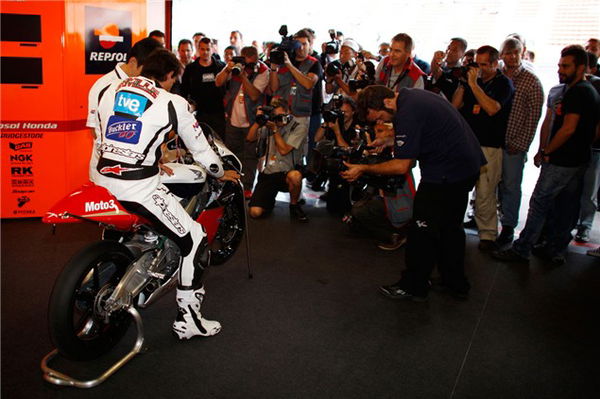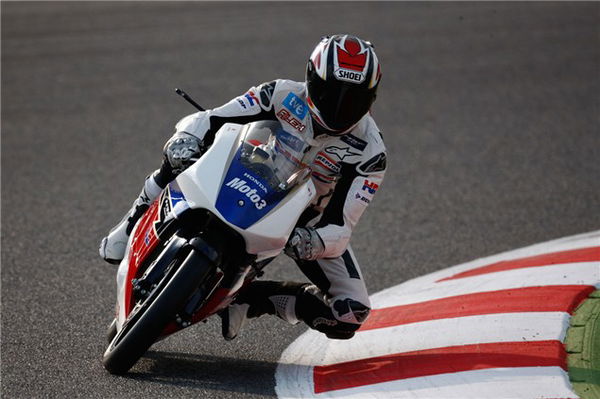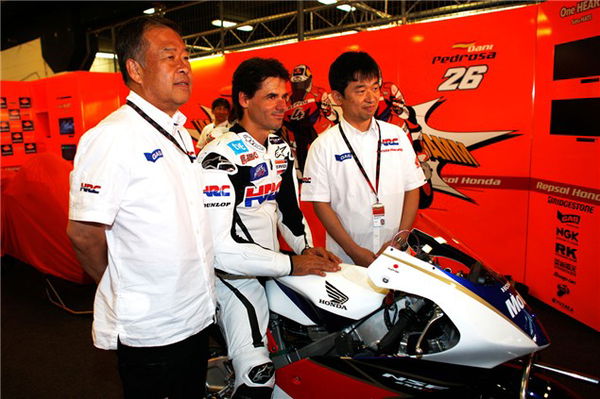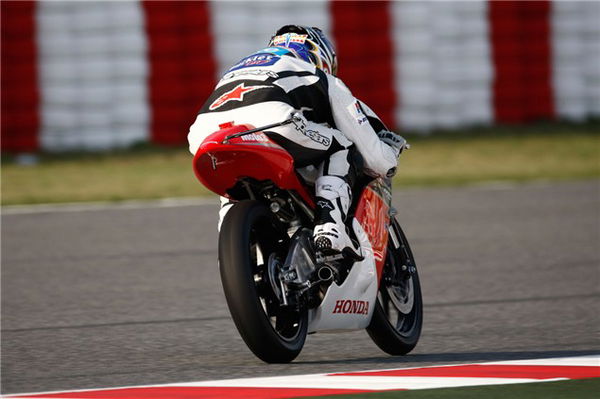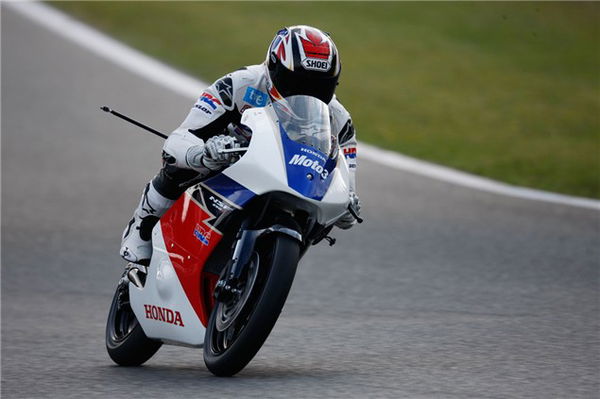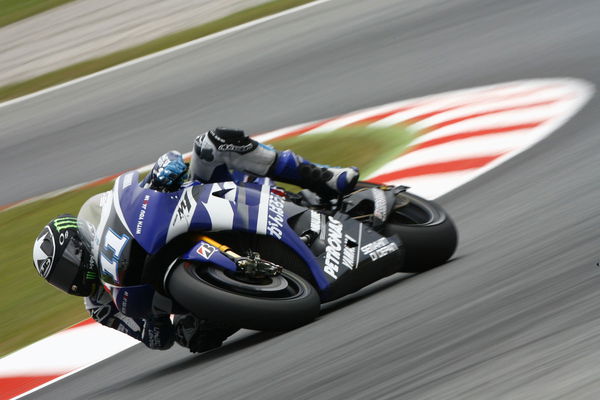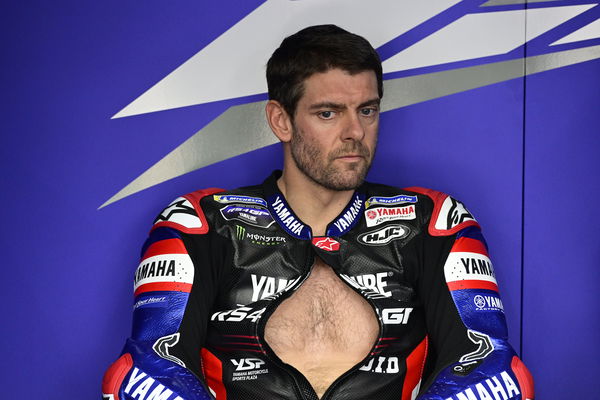Video: Crivillé rides the Honda Moto3
1989 125GP (and 1999 500GP) champion laps the Catalunya circuit on the Honda NSF250R
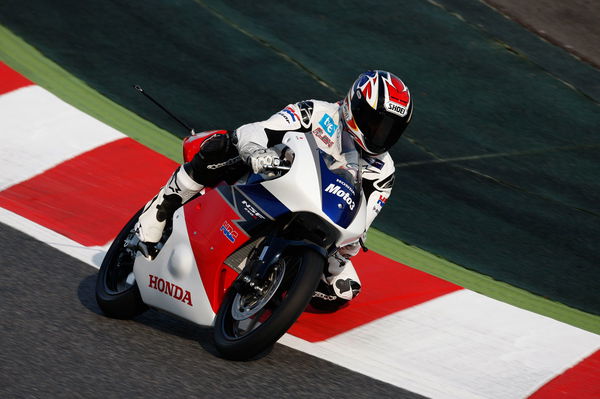
SKEPTICS may be in the wings for the new Moto3 class but Àlex Crivillé has stepped forward as a supporter of the four-stroke replacement after lapping Catalunya on Honda's entry.
Honda's entry for the new regulations was official unveiled last Thursday at Catalunya as the sheet was pulled off the NSF250R. The basis of the bike is a 250cc four-stroke single engine that has been housed in a new chassis and frame based around the out-going RS125R. The Moto3 machine weighs 185lbs making approximately 46bhp with 20lb/ft of torque.
Voicing his impressions of the NSF250R after taking part in some 'parade' laps aboard the bike at Catalunya, Crivillé said: “For me the introducion of the new Moto3 category is a great step forward and the fact that Honda is involved is always a positive point.
"After riding the bike at Catalunya I can say that the NSF250R with the chassis based on the RS125R is very well balanced. Obviously in Catalunya I tested with the standard version, but there will be a kit to provided to the teams that will increase the power of the bike.
"I think it’s a good time to introduce this bike and in one year the level will be high as it was with Moto2. At the beginning the lap times were quite slow compared to the 250cc class, but now they are close and the races are very exciting. In my point of view, Moto3 will be a very interesting category.”
The Honda NSF250R is more than just a conventional single, with the engine utilising a reverse cylinder. The configuration places the intake at the front of the engine and the exhaust at the back - the opposite of the usual arrangement. With the NSF the exhaust is actually routed from the rear of the engine, back around the front and then underneath, replicating a conventional exhaust layout despite an unconventional engine arrangement.
An argument for the benefits is it means Honda are able to slant the cylinder backwards, shifting the distribution of weight further back. If combined with a well-designed chassis, the engine helps create a better chance for mass centralisation, putting the heaviest components in the middle of the bike.
In recent years the 125 class has been dominated solely by Aprilia with a large expense for a factory-spec machine, the only bike necessary for any serious success and at a major cost for the race teams. However, the new class offers the potential for a deluge of manufacturers joining the grid next season, Crivillé continued: "The 125cc class had become a monopoly of just one manufacturers in recent years and this project will now involve a new manufacturer. The bikes will be cheaper and the young riders will start with easier bikes to ride than the 2 strokes were."
